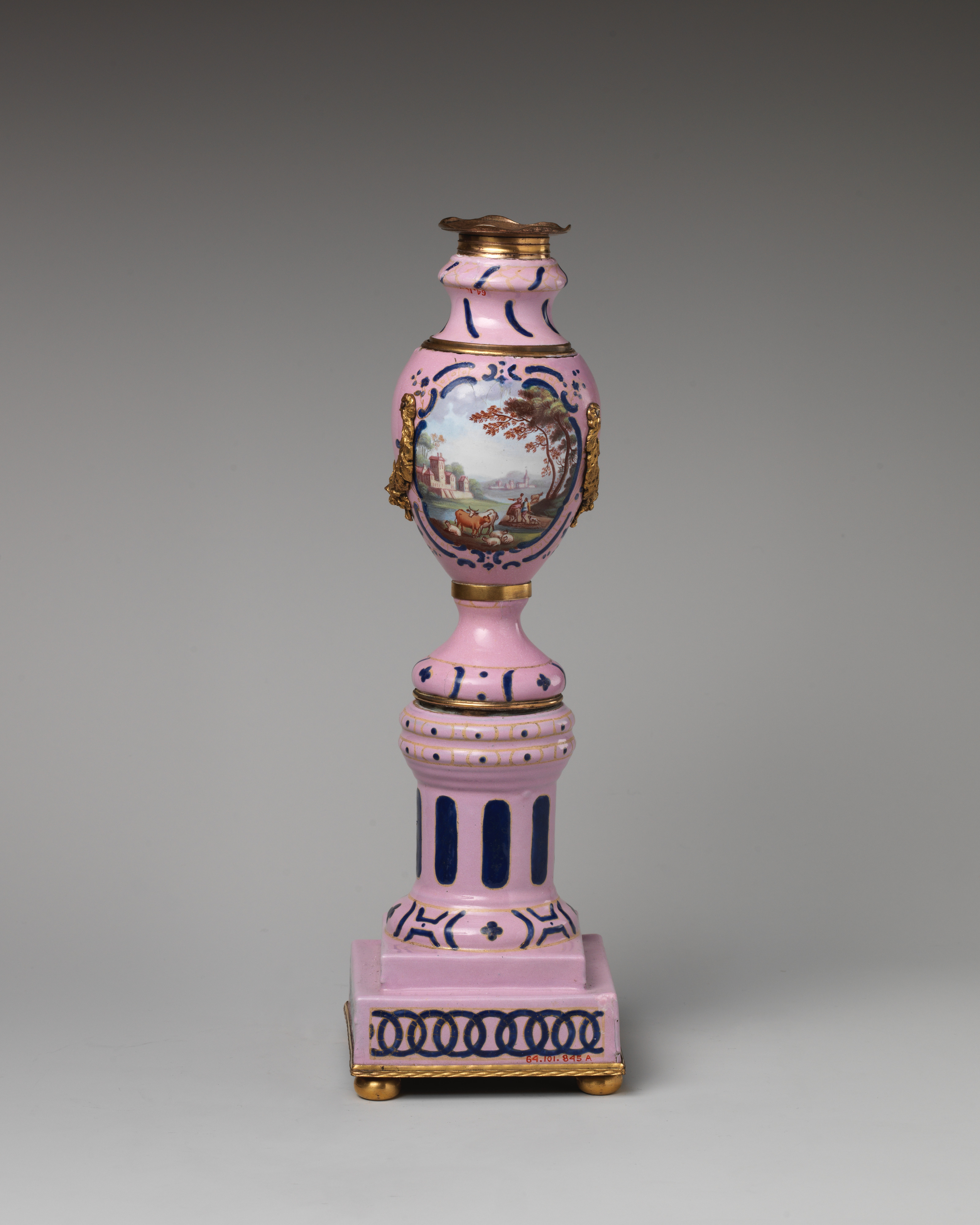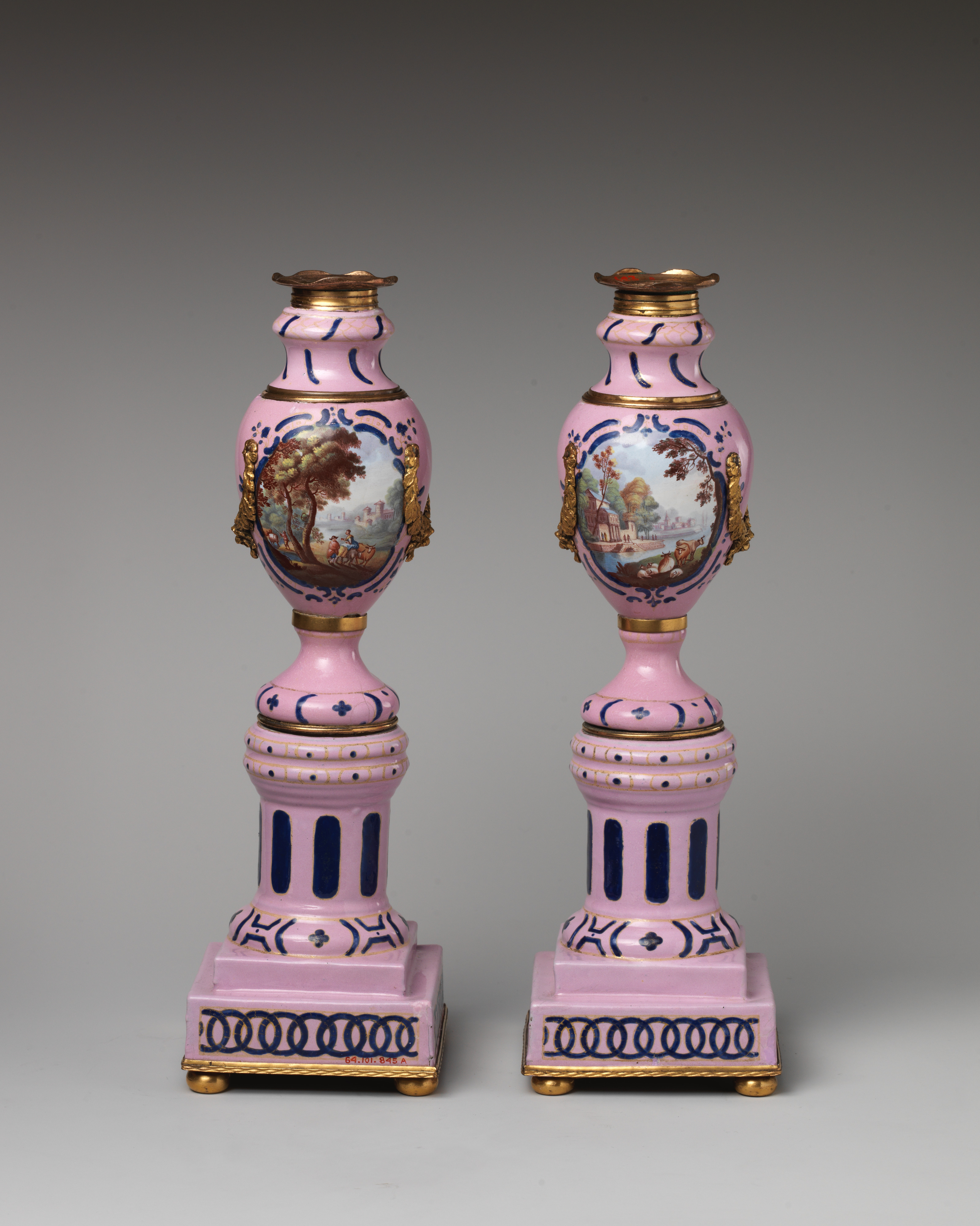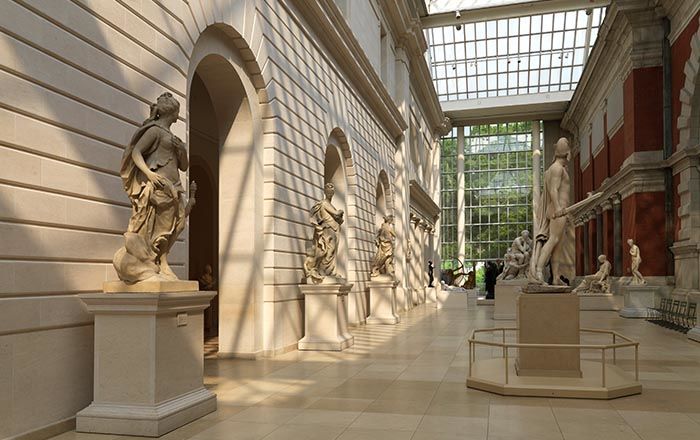Cassolette with cover (one of a pair)
British, South Staffordshire, possibly Bilston
Cassolettes, also known as perfume burners or essence pots, were initially designed as functional vessels for burning or vaporizing scents to perfume a room. Soon enough, their form was adapted for purely decorative objects. These cassolettes, decorated with pastoral imagery, are a happy medium between function and ornament; though they were almost certainly not used to disperse scent, they become candlesticks when their finials are turned upside down.
Enameled objects like this one were intended to imitate the lustrous quality of porcelain at more affordable prices. By the middle of the eighteenth century, technological innovations had made it possible to roll copper, instead of the far costlier gold, into very thin sheets. Powdered glass mixed with minerals (to determine the opacity and color of the enamel) would then be applied onto the copper sheets and fired at high temperatures. A design—whether a famous portrait, generic pastoral scene, or floral motif— could be painted on by hand or copied from an engraving through the newly invented process of transfer printing. Many enameled objects combined both methods of decoration and would be refired after the application of each new layer or color.
#413. Retail Value. High and Low
This image cannot be enlarged, viewed at full screen, or downloaded.
This artwork is meant to be viewed from right to left. Scroll left to view more.





